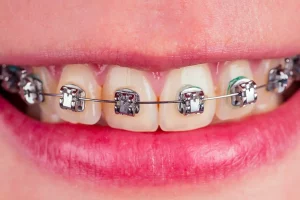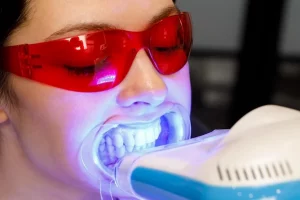Many of us are aware that when babies are born they do not have teeth. But wait, do you know that teeth can be present at the time of birth? The answer to this question is yes!
Natal teeth are the teeth present at the time of birth. These teeth have weak roots and are not completely developed(mostly). The occurrence of these teeth is rare. The natal teeth are different from neonatal teeth that erupt within a month of life.
The natal teeth can be seen as small teeth and are loose and discolored. Dental practitioners usually recommend the removal of such teeth followed by examinations as these can create other problems.
Causes of Natal Teeth
Most of the time, the natal teeth are seen in children suffering from growth disorders. However, the cause of natal teeth is still unknown.
The natal teeth can be associated with Sotos Syndrome and Ellis-Van Creveld Syndrome. These teeth are also seen in conditions like pachyonychia Congenita and Hallermann-Streiff syndrome.

Symptoms
The natal teeth appear as small, and discolored, that is they can be brownish-yellow. These teeth are loose. Sometimes these can appear as natural teeth. As per study reports, natal teeth are more commonly seen in females as compared to males.
Although the occurrence of such teeth is rare, when present can be seen in two or three numbers. Mostly the natal teeth are the precociously erupted primary or milk teeth. However, these can be present as supernumerary teeth(very rare).
Diagnosis
A dental examination should be done for diagnosis. The dental practitioners perform a physical examination followed by X-rays or radiological examination to confirm the diagnosis of natal teeth. The X-rays provide images and views of internal structures like bone, the roots of teeth, and other associated structures. The X-ray images of natal teeth show a tooth that is not completely formed.

Treatment
The severity of the condition determines the management of these teeth.
It depends on symptoms, the age of the patient, and their overall health.
In some conditions, your dentist can leave the tooth as such and perform no treatment. Here, the tooth is mature and fully developed and can be easily maintained further(mostly).
Sometimes when the natal teeth are loose with incomplete roots, these are removed. The reason for the removal of loose natal teeth is that there is the risk of accidental blockage of the airways of the child due to ingestion. Another reason for the removal of such teeth is to prevent injury to the tongue. The edges of such teeth can also be smoothened to prevent tongue injury.
The natal teeth can cause difficulty in breastfeeding as the baby can bite and it can be a reason for discomfort for the mother. This leads to the refusal to feed by the mother.
Dental visits are important as early as possible when a child is born and intervention by a dental practitioner becomes crucial when a baby is born with natal teeth.





